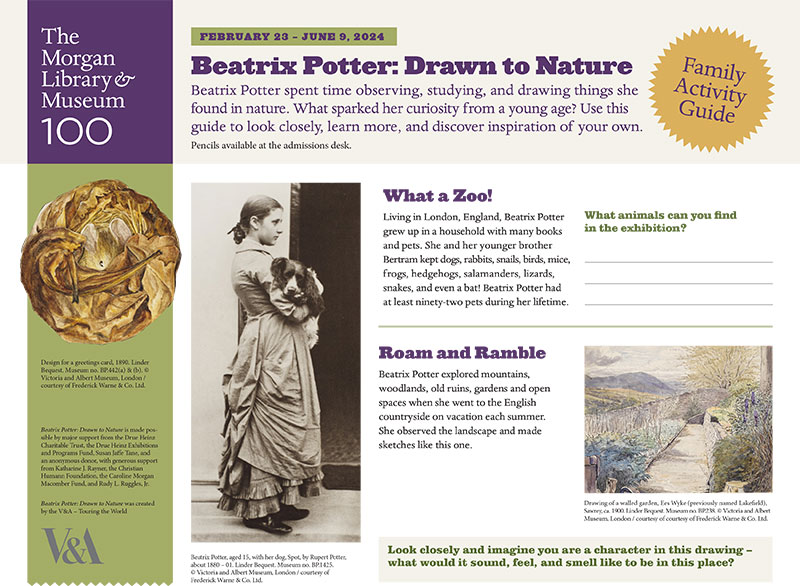Creator of unforgettable animal characters like Peter Rabbit, Mr. Jeremy Fisher, and Mrs. Tiggy-Winkle, the beloved children’s book author and illustrator Beatrix Potter (1866–1943) rooted her fiction in the natural world. Childhood summers spent in Scotland and the English Lake District nourished Potter’s love of nature, while her famous menagerie of pets inspired her picture letters and published tales. Her study of botany and mycology established an abiding interest in the life sciences, a passion she would bring to rural life at Hill Top Farm in Cumbria, England. There, she enjoyed a second act as a sheep breeder and land conservationist, ultimately bequeathing four thousand acres of farmland to the National Trust.
Beatrix Potter: Drawn to Nature brings together artwork, books, manuscripts, and artifacts from several institutions in the United Kingdom, including the Victoria and Albert Museum, the National Trust, and the Armitt Museum and Library. Paired with the Morgan’s exceptional collection of her picture letters, these objects trace how Potter’s innovative blend of scientific observation and imaginative storytelling shaped some of the world’s most popular children’s books.
This exhibition at the Morgan is organized by Philip Palmer, Robert H. Taylor Curator and Department Head of Literary and Historical Manuscripts.
Beatrix Potter: Drawn to Nature was created by the V&A – Touring the World
Beatrix Potter: Drawn to Nature is made possible by major support from the Drue Heinz Charitable Trust, the Drue Heinz Exhibitions and Programs Fund, Susan Jaffe Tane, and an anonymous donor, with generous support from Katharine J. Rayner, the Christian Humann Foundation, the Caroline Morgan Macomber Fund, and Rudy L. Ruggles, Jr.
Beatrix Potter (1866–1943), Mrs Rabbit pouring out the tea for Peter while her children look on, 1902–1907. Linder Bequest. Museum no. BP.468. © Victoria and Albert Museum, London, / courtesy of Frederick Warne & Co. Ltd.


